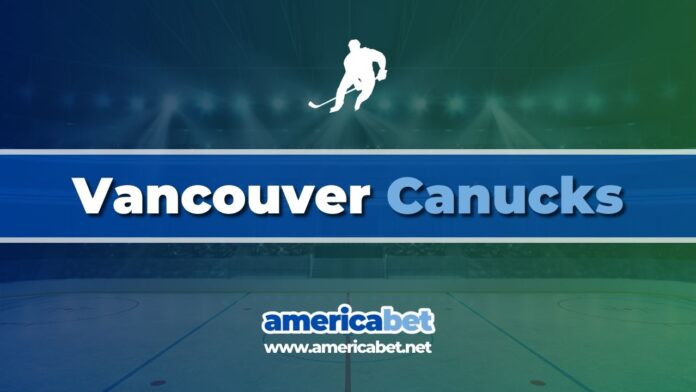Introduction to Vancouver Canucks
The Vancouver Canucks, a renowned professional ice hockey team based in Vancouver, British Columbia, are a staple in the National Hockey League (NHL). Established in 1970, the team has grown to embody the spirit and passion of ice hockey in western Canada. The Canucks play their home games at Rogers Arena, a state-of-the-art venue situated in the heart of downtown Vancouver, which becomes a focal point of local excitement on game nights.
Known for their vibrant team colours of blue, green, and white, the Canucks have carved out a significant place in the sport’s history through a combination of spirited play and a dedicated fan base. The team’s logo, featuring a stylised Orca whale breaking through ice in the shape of a ‘C’, symbolises both the geographical and cultural attributes of the Pacific Northwest.
Over the decades, the Canucks have been known for their resilience and competitive nature. They have made multiple playoff appearances and have reached the Stanley Cup Finals three times, although the championship has eluded them. These runs to the finals, particularly the passionate quests in 1982, 1994, and 2011, have cemented their status as icons of the sport in their region.
The Vancouver Canucks are not just a sports team; they are an integral part of the community’s fabric, involved in various charitable activities and serving as a source of pride and entertainment for Vancouverites. As such, they hold a beloved place in the hearts of their fans and continue to inspire new generations of hockey enthusiasts in Vancouver and beyond.
History of Vancouver Canucks
The Vancouver Canucks joined the National Hockey League (NHL) in 1970 as an expansion team, marking the beginning of professional ice hockey’s growth in Vancouver. The early years were challenging as the team struggled to make a significant impact in the league. However, the Canucks’ fortunes began to change in the late 1970s and early 1980s, culminating in their first Stanley Cup Finals appearance in 1982. Although they were defeated by the New York Islanders, this marked a major milestone in the team’s history.
Throughout the 1990s, the Canucks saw varying degrees of success, highlighted by their thrilling run to the Stanley Cup Finals in 1994 under the leadership of stars like Pavel Bure, known as the “Russian Rocket” for his speed and scoring prowess. This period also saw the emergence of Trevor Linden and Markus Naslund as franchise icons. The team’s resilience and competitive spirit were evident, although they ultimately fell to the New York Rangers in a dramatic seven-game series.

Adam Vilimek | Dreamstime.com
In the early 2000s, the Canucks continued to build a competitive team, bolstered by the Sedin twins—Henrik and Daniel—who became synonymous with the team’s identity for over a decade. Their skill and sportsmanship defined a new era for the Canucks, leading to a Presidents’ Trophy win in 2011 and another intense run to the Stanley Cup Finals that same year. Despite their loss to the Boston Bruins, the 2011 playoffs left an indelible mark on the franchise’s history.
Since then, the team has been in a state of rebuilding, focusing on developing young talent and striving towards creating a sustainable and competitive team. Key milestones such as the retirement of numbers of legendary players and the introduction of promising young stars like Elias Pettersson and Quinn Hughes mark the ongoing journey of the Canucks.
Vancouver Canucks Key Figures
Stan Smyl, affectionately known as “Steamer,” embodies the spirit and tenacity of the Canucks, having spent his entire NHL career with the team and later serving in various coaching and executive roles.
Trevor Linden is another iconic figure, revered not just for his on-ice performances but for his leadership both as a player and as President of Hockey Operations. His number 16 was retired by the Canucks as a tribute to his contributions.
Pavel Bure, the most electrifying player in Canucks history, left a lasting legacy with his speed and scoring ability. His impact was immortalised when the team retired his number 10.
The Sedin Twins, Henrik and Daniel, spent their entire illustrious careers with the Canucks, setting numerous records and becoming the faces of the franchise through the early 21st century. Their numbers 33 and 22, respectively, hang in the rafters at Rogers Arena as symbols of their significant contributions.
Pat Quinn was a pivotal figure off the ice, serving as the team’s general manager and head coach during the 1990s. His leadership helped shape the team into a perennial contender and solidified his legacy as one of hockey’s greats.
These figures have not only defined the Canucks’ identity through their excellence and dedication but have also left a legacy that continues to influence and inspire the team and its community.
Vancouver Canucks Key Figures
Stan Smyl stands out as a testament to dedication and perseverance, embodying the spirit of the Canucks throughout his playing and post-playing careers. His commitment to the team is commemorated by his retired jersey number 12, making him a permanent fixture in the team’s lore.
Trevor Linden is revered not only for his leadership on the ice but also for his extensive involvement in community initiatives off it. His number 16 jersey hangs in the rafters of Rogers Arena, a symbol of his indelible impact on the franchise.
Pavel Bure remains one of the most thrilling players to have donned the Canucks jersey. Known for his breathtaking speed and scoring prowess, Bure’s legacy is celebrated with his retired number 10 jersey.
The Sedin Twins, Henrik and Daniel, are iconic for their on-ice chemistry and off-ice class. Their contributions extend beyond their statistical achievements, impacting the team’s culture and identity profoundly. Their numbers 33 and 22 are retired in recognition of their extraordinary careers with the Canucks.
Pat Quinn, as a coach and general manager, significantly shaped the team’s competitive spirit during the 1990s. His strategic insights and leadership helped propel the Canucks to various successes, earning him a revered place in the team’s history.
Cultural Impact
The Vancouver Canucks have deeply influenced the local culture, becoming a central element of Vancouver’s social and community fabric. Game nights at Rogers Arena are a vibrant showcase of fan passion, with traditions such as the “Towel Power” wave, initiated during the 1982 playoffs, continuing to ignite the crowd. This tradition was started by coach Roger Neilson as a protest against officiating and has since become a symbol of fan solidarity and resilience.
The Canucks’ impact is also felt through their rivalries, most notably with the Chicago Blackhawks and the Calgary Flames. These matchups are highly anticipated each season, often evoking intense emotions and memorable moments that resonate with fans long after the games are over.
Community involvement is another significant aspect of the Canucks’ cultural impact. The team supports various local initiatives through the Canucks for Kids Fund, which has raised millions to support children’s health and wellness, foster the development of grassroots hockey, and facilitate educational outreach. This commitment to community service helps reinforce the bond between the team and its supporters.
Moreover, the Canucks’ influence extends into popular culture, with references in films, television shows, and media showcasing the team’s integral role in the city’s identity. The passionate fan base, known as the “Canuck Nation,” is renowned for its loyalty and spirited support, often gathering in large numbers for public viewings during playoff runs, creating a communal atmosphere of support and pride across Vancouver.
Stadium Information: Rogers Arena
Rogers Arena, situated in the heart of downtown Vancouver, British Columbia, serves as the home of the Vancouver Canucks. Opened in 1995, originally as General Motors Place, the arena has become an iconic venue in the sports and entertainment landscape of Vancouver. With a seating capacity of over 18,000 for hockey games, it offers one of the most electric atmospheres in the National Hockey League.
The arena is not just a venue for ice hockey; it is a versatile complex that hosts a variety of sports events, major concerts, and other entertainment performances, making it a pivotal element of Vancouver’s cultural scene. It underwent significant renovations in 2009 to enhance the fan experience, which included upgrades to seating, concessions, and the installation of state-of-the-art video screens.
A unique feature of Rogers Arena is its commitment to sustainability. The facility has implemented several eco-friendly practices and technologies, aiming to reduce its carbon footprint and promote environmental consciousness among its patrons.
Achievements
The Vancouver Canucks, despite their storied history, are yet to clinch the Stanley Cup. However, their journey through the NHL has been marked by significant achievements and memorable moments:
Stanley Cup Finals Appearances: The Canucks have reached the Stanley Cup Finals three times (1982, 1994, and 2011), showcasing their competitiveness on the league’s biggest stage.
Presidents’ Trophy: They have won the Presidents’ Trophy twice (2010-2011 and 2011-2012), awarded to the NHL team with the best regular-season record.
Division Championships: The Canucks have claimed multiple division championships across different eras, reflecting their regular-season dominance in the Pacific Division of the Western Conference.
Retired Numbers: The Canucks have retired several numbers in honour of their key players, including Stan Smyl (12), Trevor Linden (16), Pavel Bure (10), and the Sedin twins (Henrik 33, Daniel 22), acknowledging their contributions and impact on the team.
These achievements are a testament to the Vancouver Canucks’ resilience and enduring legacy within the NHL, symbolising their historical and ongoing pursuit of hockey excellence.
Films and Documentaries Featuring Vancouver Canucks
The Vancouver Canucks have been featured in various media that highlight their history and memorable moments. Notable films and documentaries include:
“Ice Guardians” (2016): This documentary explores the role of enforcers in ice hockey and features former Canucks player Todd Bertuzzi, delving into the physical and emotional aspects of the game.
“The Rocket” (2005): While primarily focused on the legendary Maurice “Rocket” Richard, this film includes significant historical NHL moments and contexts that involve various teams, including the Canucks.
“Making Coco: The Grant Fuhr Story” (2018): This documentary features insights from former Canucks, highlighting the career of one of hockey’s greatest goaltenders.
These films and documentaries offer fans a deeper look into the sport and the significant role played by the Canucks and their players in the broader narrative of ice hockey.
Social Media Presence of Vancouver Canucks
Official Social Media Profiles:
- Twitter: @Canucks – Provides game updates, player insights, and official team news.
- Facebook: Vancouver Canucks – Shares news articles, video content, and fan interactions.
- Instagram: @Canucks – Offers behind-the-scenes photos, stories, and player spotlights.
- YouTube: Canucks – Features game highlights, interviews, and special documentaries.
Popular Fan Site Social Media Profiles:
- Canucks Army on Twitter: @CanucksArmy – A fan-run account that provides detailed analysis, game previews, and post-game discussions.
- r/canucks on Reddit: r/canucks – A community forum where fans discuss everything related to the Canucks, from current games to team prospects and historical content.
These platforms are excellent resources for fans to stay connected with the team and engage with content that celebrates the culture and community surrounding the Vancouver Canucks.

